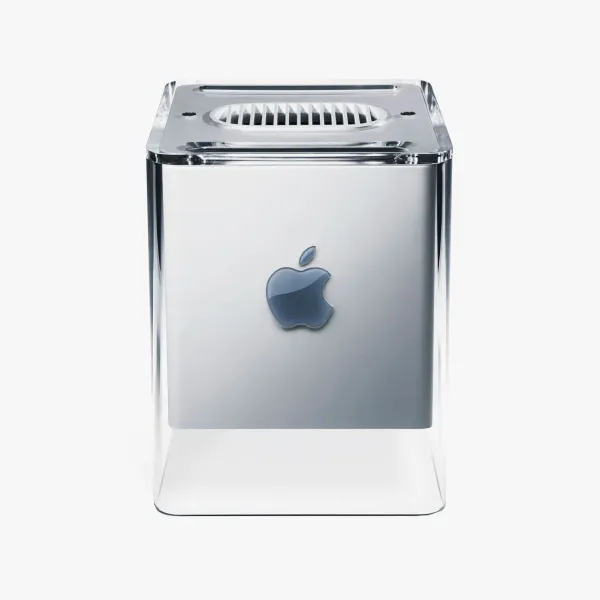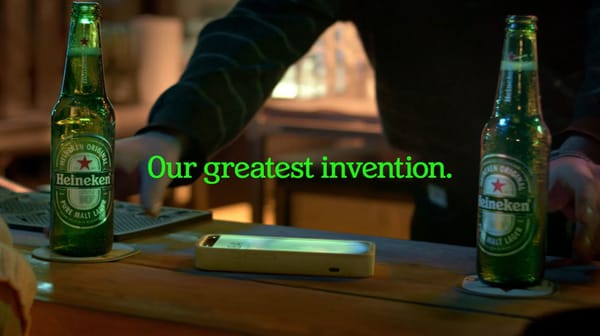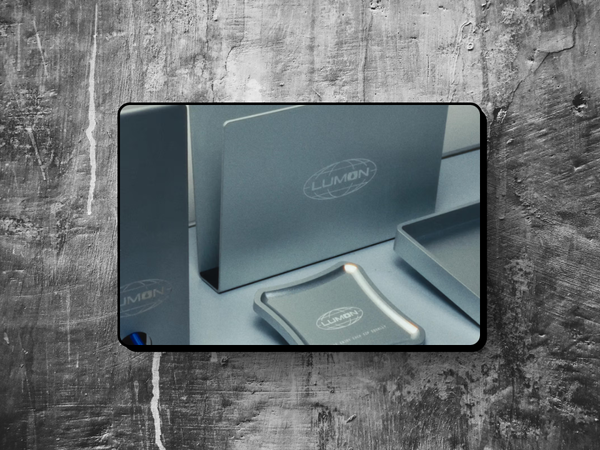Let's talk about the Apple G4 Cube.
For me, it wasn't just another computer; it completely flipped my script on what a computer could be.
Before the Cube landed, my idea of a computer was, frankly, pretty bleak. Think hulking, beige (eventually yellowing) boxes shoved under desks. Remember those mysterious "turbo" buttons?
The constant whirring of fans that sounded like a small jet engine? Booting up to a screen full of cryptic C:\> prompts? Yeah, that was my computer world – functional, maybe, but definitely not inspiring.
And then... BAM.
The G4 Cube arrived, alongside the stunning Mac OS X. Suddenly, computing wasn't just about getting stuff done; it was an experience. This thing was pure sci-fi compared to the beige boxes.
It was practically art – an 8-inch cube seemingly suspended in a clear acrylic case.

The details were magical.
No clunky power button here; just a subtle, touch-sensitive ripple on the top that preserved the clean lines. Put it to sleep, and it didn't just go dark – it breathed with this soft, pulsing white light. And OS X! Windows didn't just vanish; they swooshed into the Dock like tiny genies retreating into their bottles.
The whole "Aqua" interface, with its glossy buttons and vibrant colours, felt miles away from the drab interfaces I was used to. Sure, some critics called Aqua "lickable" and maybe a bit over the top, but I found it utterly delightful and refreshingly different.

Ive. Jony Ive
The primary designer credited with leading the team responsible for the G4 Cube was Jony Ive (now Sir Jony Ive).
At that time (the G4 Cube was introduced in 2000), Jony Ive was Apple's Senior Vice President of Industrial Design.
He led the renowned Apple Industrial Design Group, the team responsible for the iconic look and feel of Apple products starting from the late 1990s, including the iMac G3, the iPod, and eventually the iPhone and iPad.
While product design at Apple is always a collaborative team effort within that group, Jony Ive was the key figure and leader setting the design direction, working very closely with Steve Jobs.
Everything changed when Ives became more prominent in the company.
This felt like a turning point. It was the moment, for me at least, when computers started aspiring to be more than just tools. They could be beautiful, engaging, even fun.

User experience and design suddenly felt paramount, a philosophy Apple would later double down on with game-changers like the iPhone. Computing started appealing to our senses, becoming easier and more intuitive.
Okay, let's be real: the G4 Cube wasn't exactly a runaway bestseller. It had its quirks (like potential case cracks and the lack of internal expansion).
But its impact on me was huge.
It ignited a passion for Macs and ultimately nudged me towards a career blending engineering, aesthetics, and marketing. It made me think not just about what technology could do, but why we create it and how it should make us feel.
A Beautiful Flop
So yeah, you can easily point to the sales figures and call the G4 Cube a flop. But that misses the forest for the trees. This machine was a bold statement, a design icon (it's literally in museums!).
It was Apple flexing its design muscles, daring to imagine technology as something desirable, something beautiful. It showcased the kind of forward-thinking that paved the way for products that truly changed the world.
Its real success isn't measured in units sold, but in its enduring influence on design philosophy and the simple, powerful idea that technology should be a joy to experience.










